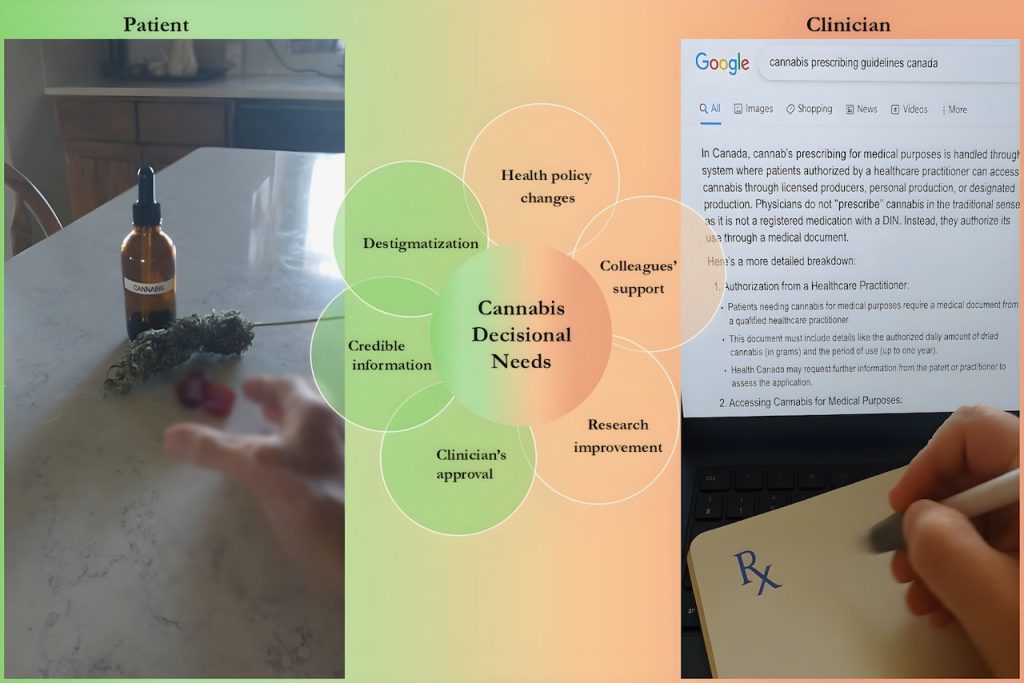Submission 2025
| Submitted by: | Heba Aref |
| Department: | Pharmacy + Pharmaceutical Sciences |
| Faculty: | Pharmacy + Pharmaceutical Sciences |
This image captures the shared hesitation of patients and clinicians navigating cannabis-related decisions. On the left, a patient’s blurred hand reflects hesitation to reach cannabis products; on the right, a clinician’s blurred hand and vanishing pen tip hover above a prescription, symbolizing uncertainty amid unreliable online information and the challenge of authorizing cannabis without strong evidence. At the center blooms a “flower of decisional needs,” drawn from my qualitative analysis of data obtained through interviews with patients and clinicians. Using qualitative analysis software that visualizes data as bubbles, I was struck to see these bubbles come together to form a flower — a flower of hope that vividly illustrates what patients and clinicians need. This six-petaled bloom reveals patients’ needs for clinician approval, destigmatization, and credible information, alongside clinicians’ needs for policy change, peer support, and long-term rigorous research. Together, these intertwined needs offer a hopeful path toward designing decision support interventions that can bridge the divide and foster confident, shared decision-making leading to better health outcomes.
Was your image created using Generative AI?
No.
How was your image created?
This image was created by combining original photography, AI-retouched photo that I took myself, and data visualizations. I conducted qualitative interviews with patients and clinicians and analyzed the transcripts using Quirkos software, which visualizes coded data as bubbles. The codes clustered into a flower-like shape that I replicated to be the centrepiece of the image. The patient image features a real patient partner from my research, who collaborated with me to photograph her hesitant hand reaching toward cannabis products (herbs, oils, gummies) to express decisional hesitation. The clinician’s image was based on a real photo that I took myself and had it retouched using AI tools to show hesitancy, with blurring of the hand and pen tip. I assembled all elements in PowerPoint, carefully arranging the three sections—patient, data flower, clinician—into a cohesive collage. A green background was added behind the patient section to reflect openness to trying cannabis if decisional needs are met, while a faint orange background was used behind the clinician section to suggest the optimism and confidence clinicians may feel when their decisional needs are addressed.
Where is the image located?
Patient’s hand image was taken in their setting. The data flower is created through data software. The clinician’s hand image is created by AI after providing it with a real clinician’s hand picture.

